You can perform a repair install of Windows 11 with an In-place Upgrade if you have some problems with Windows 11 that can't be fixed with regular troubleshooting solutions. By doing In-place Upgrade, you won't lose your data, including user accounts, personal data, and installed apps.
Advertisеment
Before proceeding, you need to know the following.
- You can only perform Windows 11 In-place Upgrade from within the running OS. E.g. you can repair install Windows 11 from a running Window 11 instance. This won't work from Safe Mode or UEFI.
- You need a bootable media or an ISO file. with the same edition, version and build number (or higher) of the OS.
- Your installation media should support the same language as the OS you want to repair.
This post will show you how to perform a repair install of Windows 11 by doing an in-place upgrade without losing your data.
Repair Install Windows 11 with In-place Upgrade
- Disable your antivirus software if you are using a third-party solution. You shouldn't disable the built-in Windows Defender app.
- Disable or suspend BitLocker for your system drive if you have it encrypted.
- Double-click your ISO file, or insert your USB drive, and click on the
setup.exefile.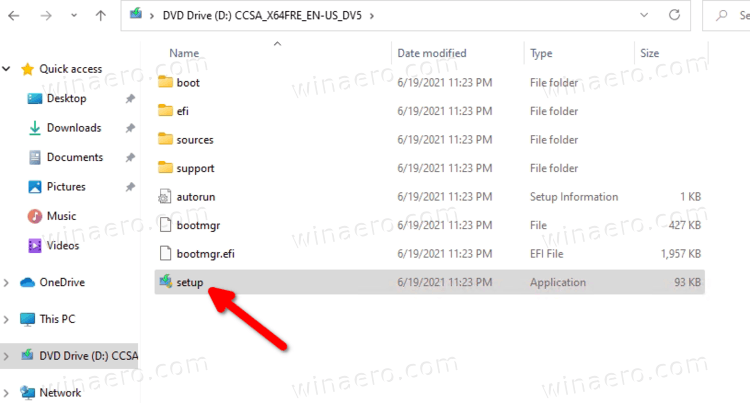
- You may be prompted by User Account Control. Click on Yes if so.
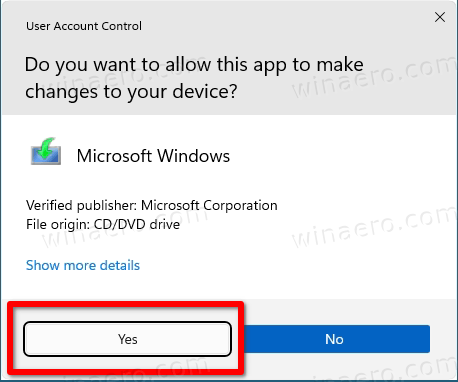
- In the Install Windows 11 dialog, click on Change how Setup downloads updates.
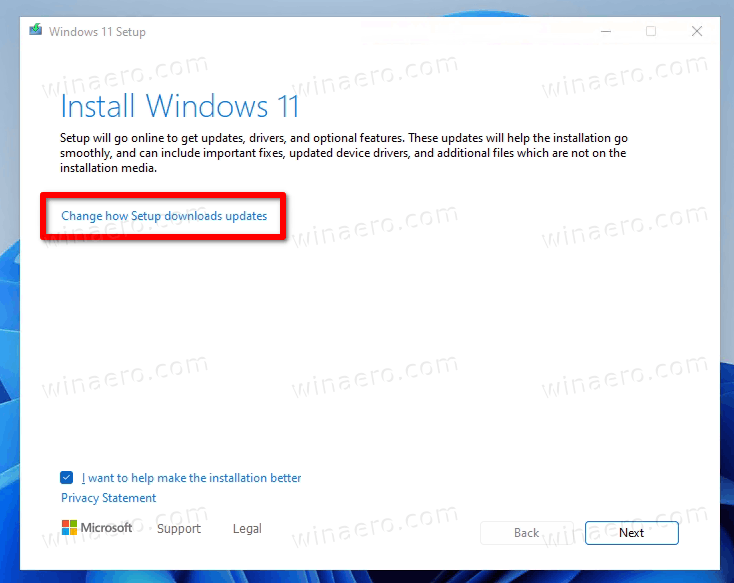
- Select Not right now. This will save you from downloading a new build (if available). Click Next.
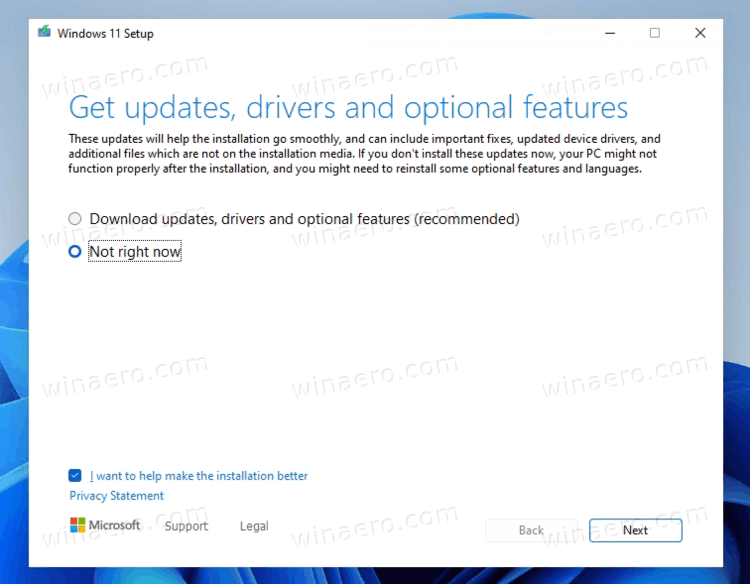
- Setup will check your PC and show a license agreement. Click on Accept in the license terms dialog.
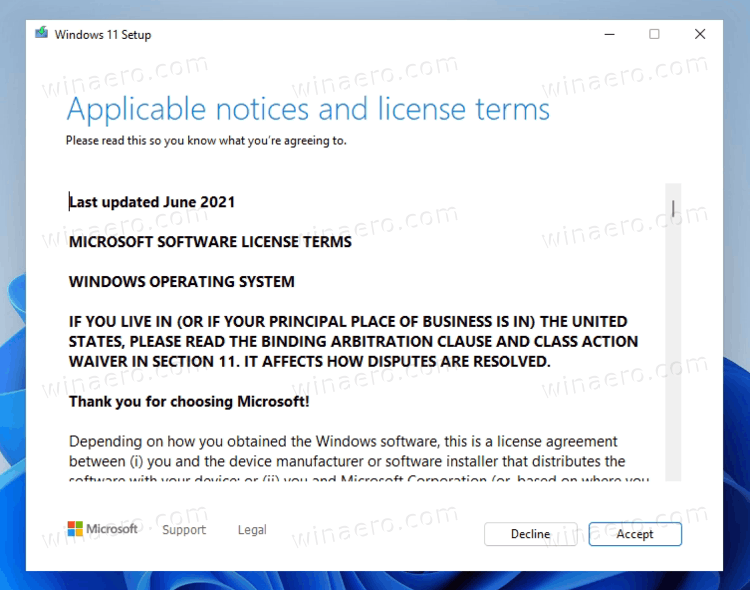
- Wait for the setup program to check for the available free space.
- On the Ready to install page, click the Change what to keep link.
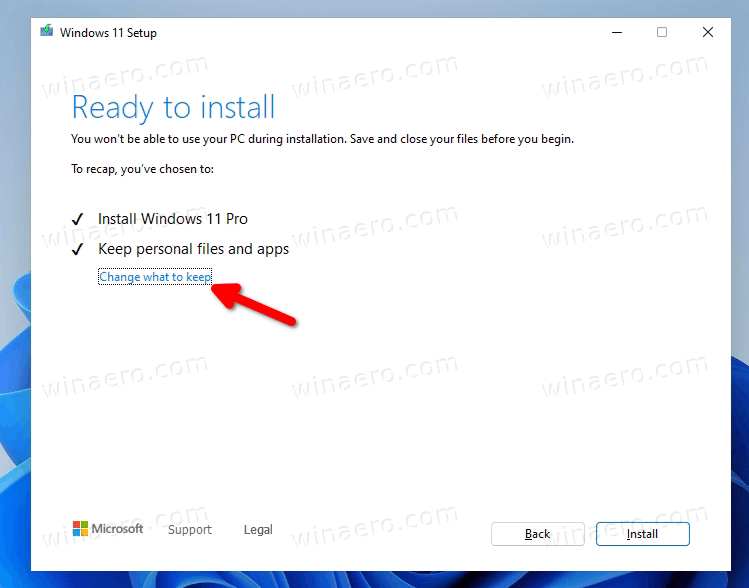
- Now, you can select Keep personal files and apps, Keep personal files only, and Nothing. Also, Nothing is the only option that will be available if your installation media doesn't match the installed Windows 11 version or language. Note: It is safe to close the setup wizard at this step and cancel the repair install process. Otherwise, you won't be able to cancel it later. Finally, click Next.
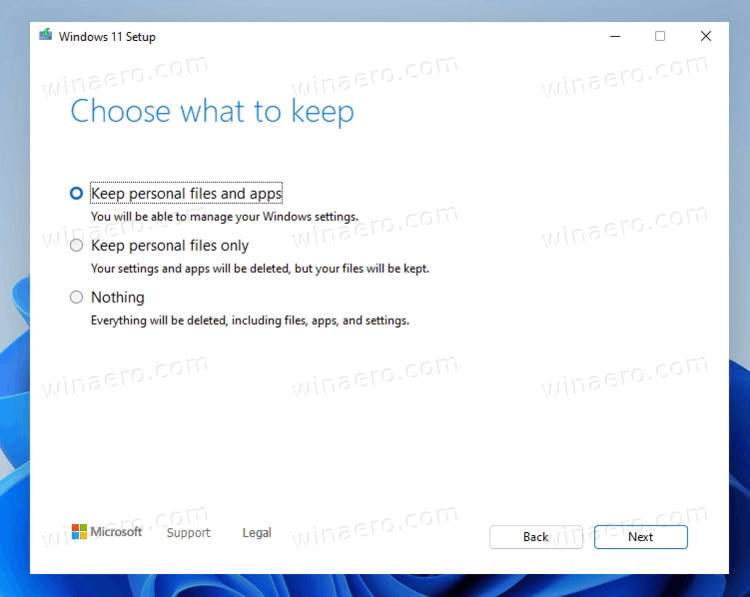
- Click on Install to start the repair install of Windows 11.
Done! Windows 11 will restart your device several times, and lead you to the lock screen. Depending on the options you set, it will keep all your files, apps, and user accounts.

Sign in with your credentials to get to your desktop.

That's it.
Support us
Winaero greatly relies on your support. You can help the site keep bringing you interesting and useful content and software by using these options:
If you like this article, please share it using the buttons below. It won't take a lot from you, but it will help us grow. Thanks for your support!
Advertisеment

Quote: “By doing In-place Upgrade, you won’t lose your data, including user accounts, personal data, and installed apps.”
Most people will read this as saying you will not lose any of your software, i.e. programs.
WRONG
You will have to reinstall ALL your software and reconfigure them. All programs you purchased and installed.
What Microsoft mean is that Microsoft stuff, including “apps” and widgets bought on the MS Store will remain. The term “apps” has come to mean any software, including real programs bought and installed by the user. These WILL be lost.
I’ve heard of so many people mislead by this claim and have not only had to re-download and re-install large programs, but to re licence them and reconfigure them.
PLEASE make this clear in future and stop copy-pasting from Microsoft.
to do the repair as you say you need to have the .iso image of Windows 11, even if I am an insider I cannot find where to download it from microsoft servers and other parts on the web I do not trust
Hi Antonio, you need to download the Windows 11 Media Creation Tool from Microsoft Directly. Use this to create an ISO and store it in a folder on the root of the C Drive. Once in here and saved to your disk drive fully, you can simply double-click the ISO and navigate to the setup.exe as depicted in the guide for the In-Place upgrade.
I already have a USB drive made bootable with Rufus and an ISO image I downloaded 6 months ago and used on another Win 11 computer for an in-place upgrade like you present here.
Do I need to get a current fresh image from Microsoft or just use this same drive on my present WIn 11 computer?
Also, I read your disclaimer and I remember I didn’t lose my installed programs or settings. I forgot but was that the advantage of using Rufus?